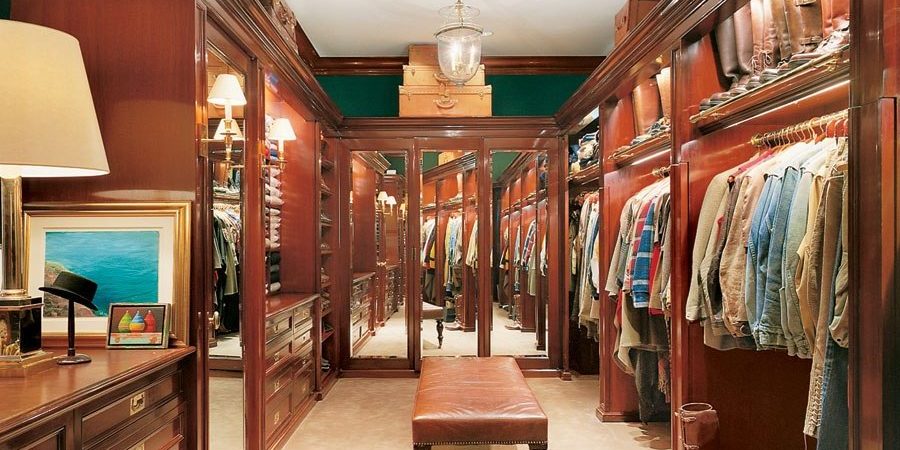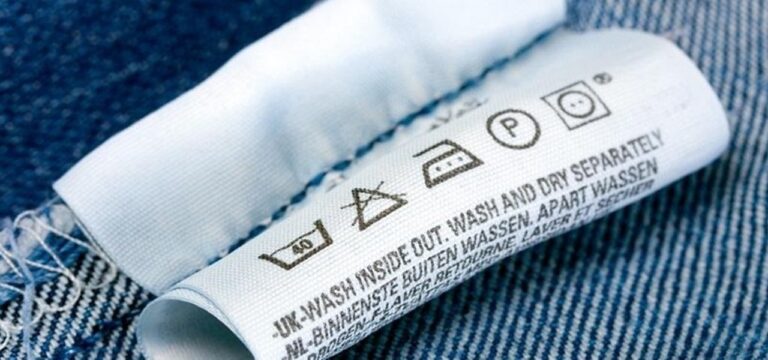You have the walk-in closet you always dreamed of and assembled an impeccable collection of priceless vintage, haute couture, evening wear, footwear and accessories. How do you go about protecting your precious wardrobe and keeping items in pristine condition? Garde Robe has provides some tips of the trade:
Never store your wardrobe in:
- Basements, attics or closets where the temperature and humidity levels are inconsistent
- Closed closets in your second or infrequently visited home
- Closets that have an outside wall (these closets tend to have higher relative humidity)
- Near a window with sunlight
- Plastic or vinyl bags
Your wardrobe’s worst enemies are changes in temperature, sunlight, moisture and material-damaging insects such as clothes moths.
Heat – Particularly a problem for garments made from animal skins and furs. These fabrics require the natural oil to remain supple and prevent degradation and loss of integrity of the skin. Dry skins will eventually break down and becoming weakened and split.
Sunlight – Dye fading. The first color to fail will be any dye with purple including many blue garments. Sun fading can happen in as short a time as a few hours. Be careful when hanging a jacket in the back of a car to prevent over exposure.
Moisture = mold and mildew. Closets are generally dark places with little air movement. Add moisture and this is the perfect environment for the growth of mildew. Be sure to air out items that may have been subjected to high relative humidity before returning back to your closet. It is a good practice to open closet doors when leaving the home for a trip to allow air circulation in the closet.
Insects – always clean garments prior to storing them for an extended period of time.
Ideal storage conditions for long-term preservation of textiles and fabrics are:
- Steady temperature. Frequent changes in temperature affect the integrity of fabrics.
- Low relative humidity to prevent moisture and mold
- Low light to prevent light fading
- Filtered air to remove impurities that would be trapped in fabric
- Moving air to prevent culture growth
- Breathable garment bag and box storage
- Wrap items individually in acid free tissue and/or muslin
Avoid these common mistakes:
- To avoid distortion and stretching, never store vintage, embellished gowns, knits or delicate items on hangers; always store these items flat, wrapped individually in acid-free tissue, and place them in a breathable, archival box.
- Always remove the plastic garment bags from the dry cleaner immediately. These bags do not allow the garment to breathe properly, which leads to fume fading.
- Never put worn items back in the closet next to clean garments. Even if a worn garment is “clean,” your body oils and perfume act as a magnet for material-damaging insects such as moths. Putting the worn garment back in the closet is an invitation, and these unwelcomed guests will create havoc and irreparable damage. Don’t kid yourself that a few pieces of cedar and a lavender sachet will keep your closet free from insects indefinitely.
- Be aware that leather items (handbags, shoes and garments) absorb a lot of water and can take longer to dry completely. After cleaning, keep leather pieces outside the closet for a few days before placing them in the closet. Items placed in the closet too soon could cause mildew and contaminate the closet.
- Don’t allow leather and denim items to come in contact with other items. Use breathable garment bags for hanging items, dust covers for handbags and individual boxes for footwear. Placing these items in the closet unprotected will lead to dye transferring.
- Don’t overcrowd your closets. Proper air circulation is critical for preserving fabrics.
- If you choose to store infrequently worn or off-season garments in a guest room closet to avoid overcrowding your closet, be sure to open the closet doors and leave a fan on in the room from time to time and when you go on vacation.
Why do dry cleaning bags need to be removed?
Dry cleaning bags prevent garments from breathing. Out gasses from the dyes of the garment and lining can collect in the bag and cause fume fading. The lack of air movement caused by dry cleaning bags will permit moisture to collect resulting in mold.
Why are wire hangers are so bad?
Wire hangers are less than ideal for any length of time or storage of garments. Knitwear is particularly susceptible to distortion when subjected to the localized stress of wire hangers. The weight of a knit garment alone will cause the formation of “rabbit ears” at the shoulders of knit and stretch wear. It is best to store these items flat to keep them from distorting while hanging or use a broad hanger to distribute the stress. Over time, wire hangers will rust and stain garments.
About Garde Robe:
Garde Robe is the nation’s first and only museum-quality wardrobe storage, preservation and Cyber Closet valet service. Estate management professionals are encouraged to familiarize themselves with Garde Robe’s singular wardrobe management & preservation services to learn how Garde Robe can help your clients with exceptional couture wardrobes.



